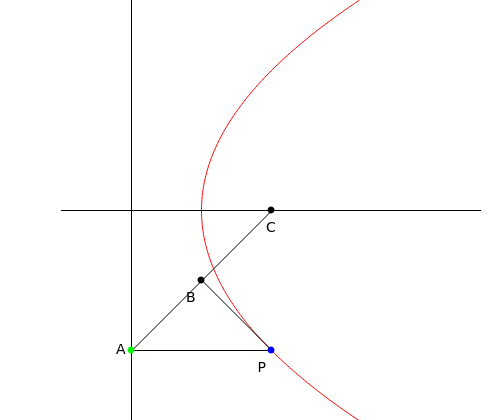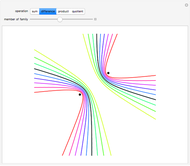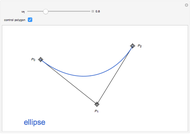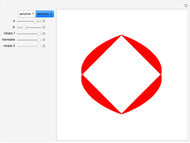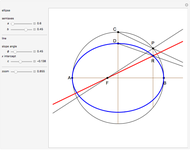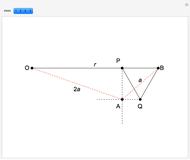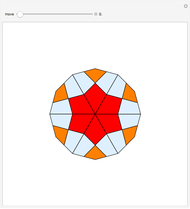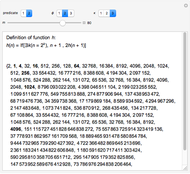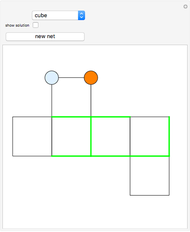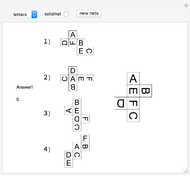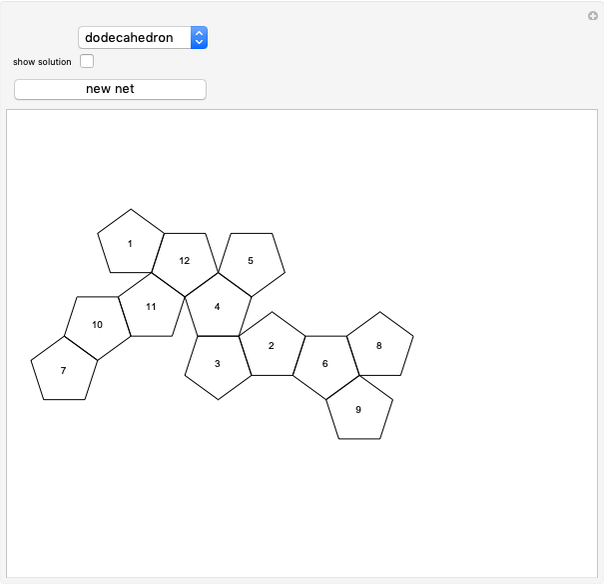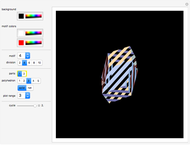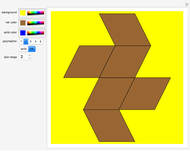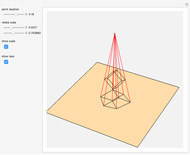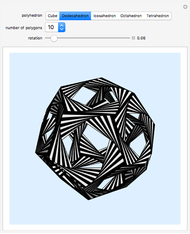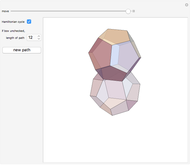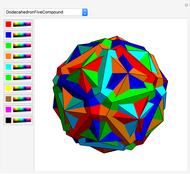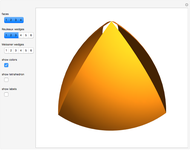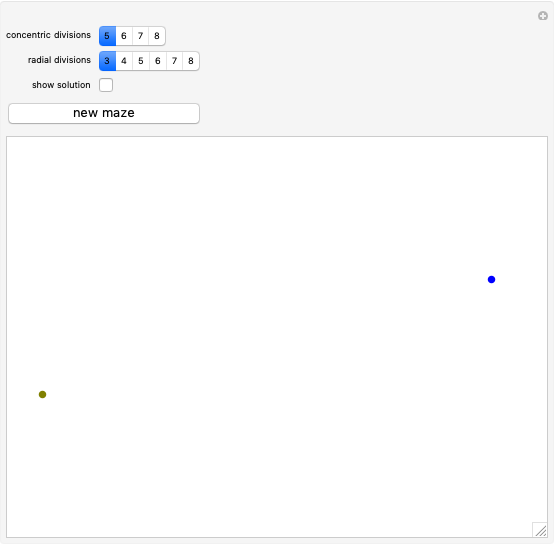Constructing Quadratic Curves

Requires a Wolfram Notebook System
Interact on desktop, mobile and cloud with the free Wolfram Player or other Wolfram Language products.
This Demonstration constructs the parabola, ellipse, and hyperbola geometrically. These constructions only need a straightedge and compass.
[more]
Contributed by: Izidor Hafner (November 2012)
Open content licensed under CC BY-NC-SA
Snapshots
Details
Quadratic curves are also called conic sections, because they can be constructed as the intersection of a plane and a cone produced along its generating lines (a double cone). The type of curve depends on the angle to the cone's axis and the distance to the apex of the cone.
A circle is an ellipse with identical foci for its center and radius  .
.
Quadratic curves can degenerate into a single point (a circle with  ), a pair of overlapping lines (a hyperbola with
), a pair of overlapping lines (a hyperbola with  ), two parallel straight lines (a parabola as the focus tends to infinity), two intersecting lines (a hyperbola as the foci merge), or the empty set (an ellipse when
), two parallel straight lines (a parabola as the focus tends to infinity), two intersecting lines (a hyperbola as the foci merge), or the empty set (an ellipse when  is too small).
is too small).
Permanent Citation
